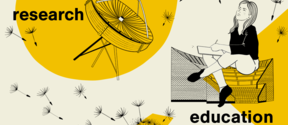Aligned assessment of a course is based on the learning outcomes and the assessment methods that are recorded in the curriculum. These, together with the selected teaching methods and assessment criteria, form the whole of assessment, showing students what is expected of them during the course.
Aalto uses diverse assessment methods. These include self-assessment, peer review, teacher-led assessment, stakeholder assessment and even automated assessment. The assessments can also be carried out anonymously.
Attention can also be paid to the diverse types of assessment used within the programme, as the diversity supports different learners, and course assessment methods may be modified in certain cases to keep both the teacher’s and the student’s overall workload reasonable.
Assessment is also continual and interactive.
We support students’ learning by providing them with feedback on their learning through assessment. At its best, assessment involves regular interactions throughout the course, where the teacher supports students by providing continual feedback to guide their learning.
The guiding effect of the assessment enables positive development of learning outcomes.
Sustainable assessment supports the well-being of both the student and the teacher and takes into account the personal needs of different learners.
Sustainable assessment makes visible the assessment criteria and the links between the criteria and student performance, thus creating a basis for equal treatment, fairness and quality in assessment.
Transparency brings together the above principles, as the principles are at their best when they are fully transparent. Assessment is a comparison between the objectives set and the results achieved. Transparency in assessment means clearly communicating to students the objectives of the course or course component being assessed as well as the assessment criteria and the guidelines.
Clear criteria provide students with a roadmap for developing and deepening their own competencies. The objectives, criteria and guidelines are anchored to the course in a way that helps the student see the studies as a predictable whole and organise their own work sensibly and systematically.







